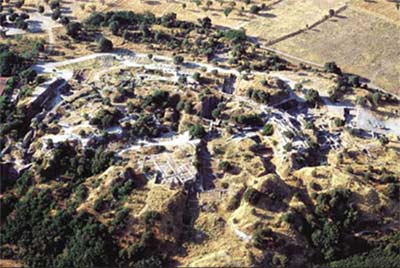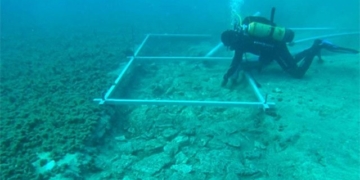In the masterpiece Iliad, Homer recounts that the war between Sparta and Troy erupted when Helen, the wife of the Spartan king, was abducted by the prince of Troy. However, according to some archaeologists, the Greeks aimed to conquer Troy solely because it was a major trade center. Today, historians suggest that the site was actually a fortress with very few inhabitants.
These conflicting opinions have sparked a new “Troy War,” but not through violence; instead, it is a war of words between two researchers from the University of Tübingen (Germany): archaeologist Manfred Korfmann and historian Frank Kolb.
 |
|
The Current State of Troy Today |
Since 1988, Dr. Manfred Korfmann has been excavating the area of Hissarlik Hill in western Turkey, where an ancient fortress is believed to be the remains of Troy. He claims to have found evidence outside the fortress indicating that it was once a bustling city. Among his discoveries are the foundations of “many houses and streets,” as well as pottery scattered throughout the site. Additionally, while digging down to the bedrock south of the ancient fortress, Korfmann uncovered wide and deep ditches, which may have been used to obstruct the advance of chariots and large wooden structures employed by invaders to breach the walls.
Korfmann also posits that during that time, Troy, with a population of about 10,000 people, was a crucial stopover for ships sailing from the Aegean Sea to the Black Sea. It was likely this “supply station” position that made it an attractive target, leading to conflict between the two city-states.
Last year, Korfmann showcased his excavation results in an exhibition titled: “Troy, Truth and Fiction.” However, upon its debut, the exhibition faced harsh criticism from Dr. Frank Kolb, an expert in ancient history.
“Korfmann wants to exaggerate Troy into a large city at all costs. Therefore, he does not shy away from fabricating evidence,” Kolb declared. He stated that the actual excavations have not provided any solid evidence of a major trading center outside the fortress. According to Kolb, the “many houses and streets” that Korfmann “discovered” are mere imagination, as very few excavation pits were conducted and most of the land surrounding the fortress is agricultural. Furthermore, “no goods or crafts have been found to prove Troy was a significant economic center,” the historian added. In conclusion, Kolb asserts that Troy was not a city but merely a fortress, possibly the estate of some prince.
Regarding the presence of ditches, Kolb noted that they were simply conventional irrigation systems, nothing more. However, Korfmann countered with the argument that such a possibility could only occur if water could flow uphill!
Some historians and archaeologists support Kolb’s perspective. However, Korfmann is not alone in his stance. Dr. Peter Jablonka, an archaeologist from the University of Tübingen, stated that the remnants of the city could be found far beyond the ditches, indicating that Troy was at least ten times larger than previously estimated. With so many hypotheses and arguments, the truth about the scale of Troy remains a mystery. Homer seems to have overlooked this in his epic.
B.H.


















































